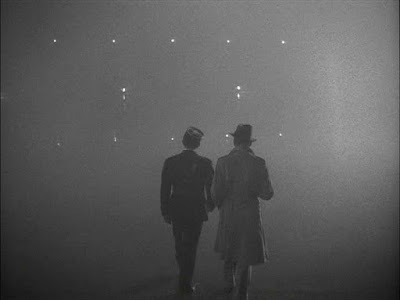 |
| Norman Rockwell's "The Circus Barker" (1916) |
With the 2014 San Diego Comic Con quickly approaching, I was faced with the challenge of producing some promotional material that would have visually distinguished this Phantom series from all the others ever produced in the US by independent publishers.
THE PROMOTIONAL POSTER
In one of our initial phone calls, Hermes Press Publisher, Dan Herman, expressed the desire of seeing the cover of the first issue of our mini-series appear also on the front cover of “Previews.” (The monthly catalog published by Diamond Distribution)
The idea was both ambitious and expensive, considering the high fees charged by Diamond for their covers. Nonetheless, to appear on the cover of Previews would have added prestige to our project, increased its visibility and stimulated higher sales.
For me, this translated in the enormous pressure and responsibility to produce an impressing image that would have a strong impact on both retailers and readers and motivate them to give our series a chance.
I decided therefore that instead of creating an illustration for a comic book, I would approach my project as if we were making a movie and I was making a movie poster.
For my image I took inspiration from those epic movie posters of the 50s and 60s. They usually had a shot of the hero -in action - in the foreground, surrounded by a collage of the best action scenes. I was looking for something that would have given today’s readers the same sense of awe I had when, as a child, I first saw those posters.
 |
| I was inspired by the movie posters I saw when I was a kid. |
I was also trying to make a strong statement that this was the same Phantom that generations of readers, worldwide, had grown to love. The Phantom that Lee Falk himself would have been proud to read.
I shared my ideas with Mr. Herman who, after presenting some initial concerns over the necessary extra budget agreed to use the image not just on the cover of Previews and as alternate cover of issue #1 but as the standard image of our press releases, banners, company’s websites, T-shirts, gadgets, etc.
In order to make my idea more appealing to my publisher and assuage his budgetary concers, I offered to do it for the same low cost of a regular cover (even though it would have taken A LOT more time and effort) and promised to gift him of the original art. (As I did, later)
Next I went on a hunt for all the elements that would make this poster illustration scream “The REAL Phantom is back!”
Lucky for me, I found in my home library a copy of “The Phantom Encyclopedia” (published by Frew in 2007) which was personally autographed for me by the late great Jim Sheperd. Within the pages of the encyclopedia I found inspiration and visual reference for many people and places which characterize The Phantom’s world, as envision by Lee Falk.
 |
| "The Phantom Encyclopedia" autographed by Jim Sheperd |
All these elements came back to life in my collage: from The Whispering Groves to the Golden Beach of Keela Wee, to Phantom Peak; from Old Baldy the gorilla and Zima The Rogue Elephant to Stegy the Stegosaurus; from the Singh pirates’ ship to the Sky Band’s airplanes, to the Bandar Warriors. All these elements and many more framed all our main characters: The Phantom, Hero, Devil, Diana and the twins, Guran, The Jungle Patrol and several others for a total of 25 different elements playing a visual fanfare for “The Ghost Who Walks.”
 |
 |
| Initial pencil sketch (above) and final inks |
 |
| Grant Speed's statue of "The Masked Rider" found at Texas Tech University was the inspiration for my Phantom and Hero pose. |
THE LOGO
Along with the promo poster I developed a new logo for the series. I strived for a “Retro” look with a classic comic book font and a circular “medallion” with The Phantom in his trademark heroic pose. The logo was later “streamlined” by Dan Herman. Nonetheless my version was used on the inside front cover of all six issues.
 |
| Color variations on the logo |
COLORING MY WORLD
Mexican color artist Jesus Aburto was brought on board to color the poster and (potentially) the whole mini-series.
Jesus had gained a good reputation working for Marvel Comics (Punisher War Journal, Iron Man, X-Men, Kazar) and did a fantastic job coloring Howard Chaykin’s “Buck Rogers” mini-series for Hermes Press.
The process of coloring the poster took a little more than two weeks (much longer than expected) due to Mr. Aburto’s other commitments and the numerous color suggestions (and revisions) I had to provide, which took me away from working on the series’interior pages. (This resulted in further delays for me. When it was all said and done, the amount of time necessary to produce the poster divided by the time it took to complete it resulted in a wage of about $2.50/hour. That was the price I had to pay.)
The final result, however, was stunning.

 |
| Helping the colorist identify the order of planes (above) and one of several color revisions sheets. ((Each number was explained in an accompanying email) |
 |
| Background color variations |
 |
| My proposed version of the poster. (It was changed later by the publisher) |
Coming up Next: “For Those Who Came in Late…” Re-imagining The Phantom’s origin story.



























